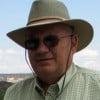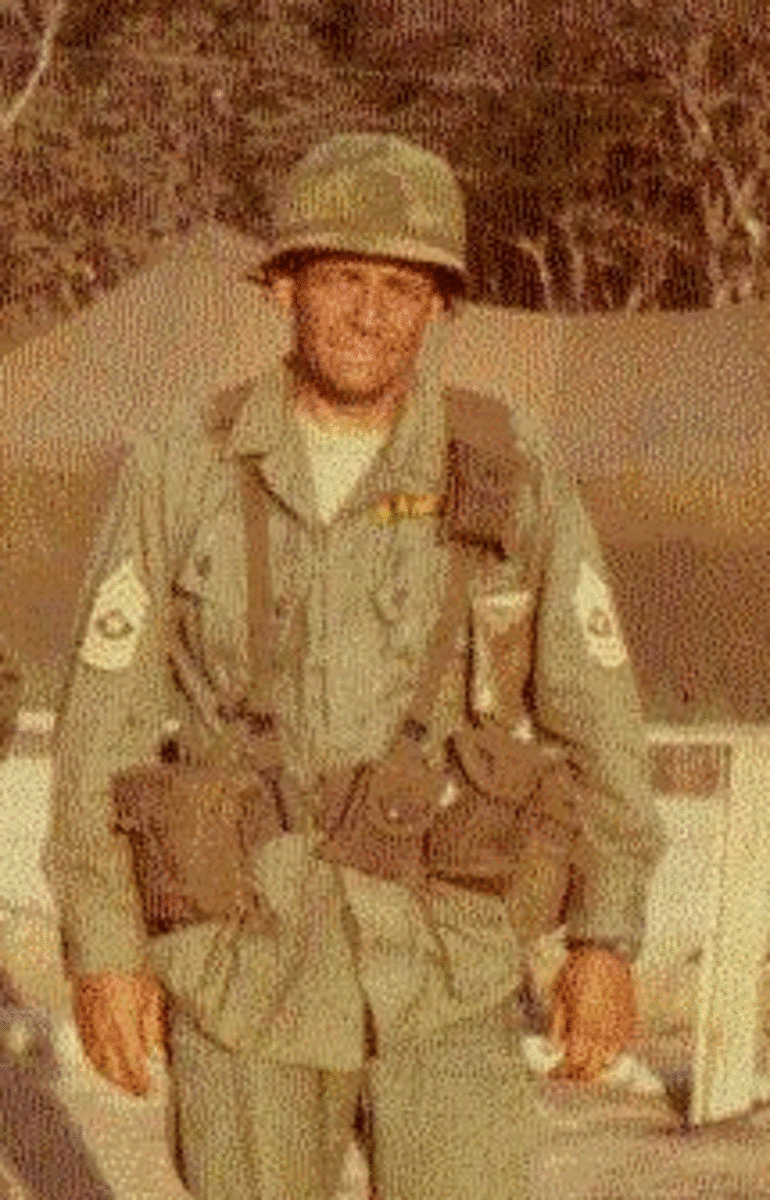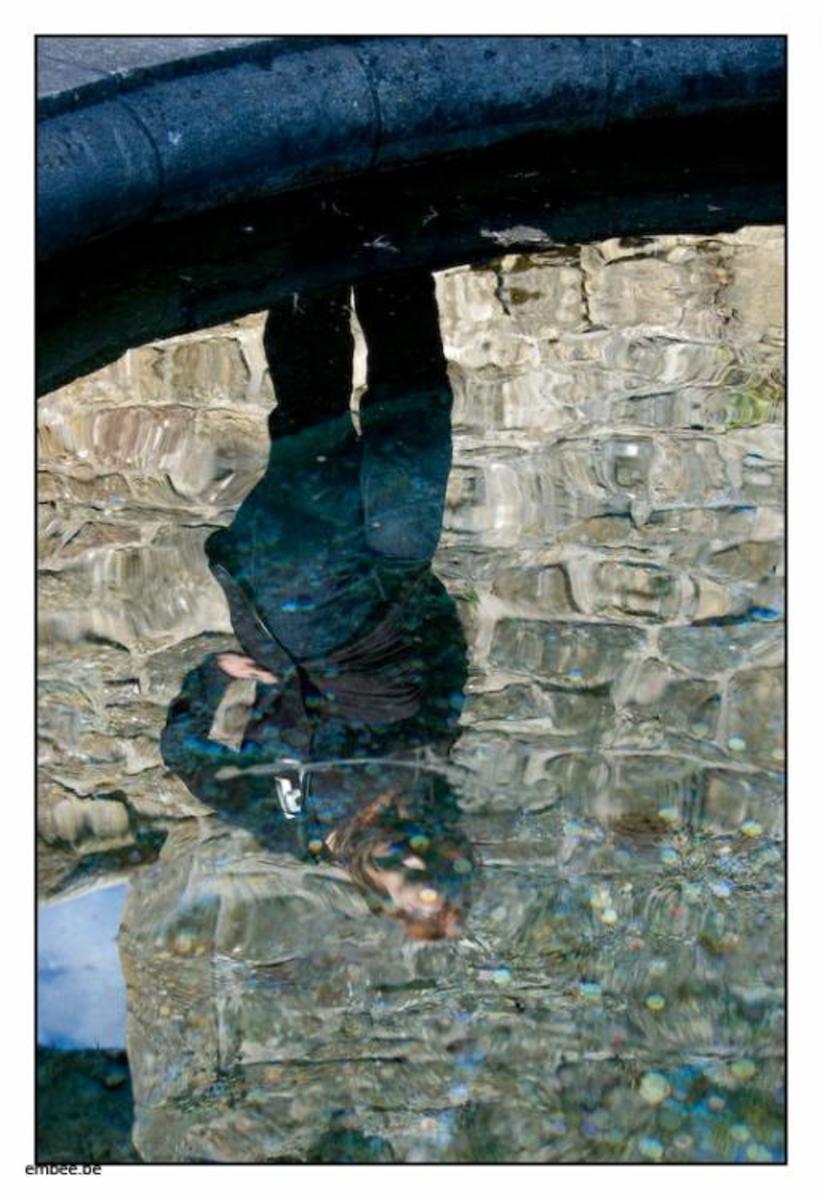Weston Wagons West - Ep. J11 - Life in Bryantown, Maryland, persevered as the war with Britain continued
Otho Holland Williams
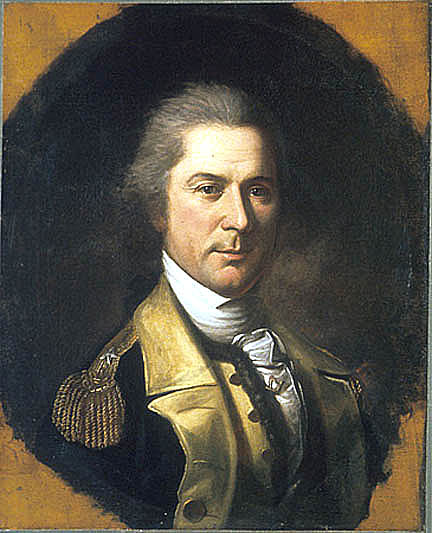
Weston Wagon Works built wagons for war effort
Once the British government declared the people of Boson and Massachusetts in a state of rebellion, orders for Weston wagons rose to a new high and kept rising as each new report was received from a variety of sources. As the Association movement took form, following the actions of the First Continental Congress on nonimportation of British products and non exportation of American production to Britain, needs for internal American production and distribution of goods grew as each month went by.
Theo, Cyrus and David Weston were totally consumed with meeting the wagon needs of their community. In mid-1775, as military provisions needed to be transported from the several colonies to the Boston area, demand for wagons only increased. Demand exceeded supply and supply became difficult to achieve as more and more able-bodied men volunteered for militia duty directly.
Theo Weston was able to recruit extended family members to serve in the militia over the following critical year so that Cyrus and David would not need to leave the wagon works business for military service. They all felt that very strong patriotic urge, but each was totally committed to meeting the patriotic needs via their business contributions versus possibly sacrificing their lives in military ways.
Kinnick Early US Family
William Smallwood
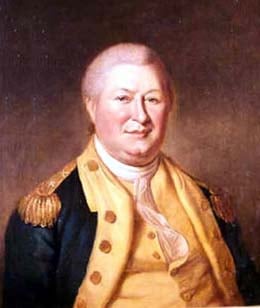
William Kinnick became a Sergeant in the 6th Regiment of the Maryland Line
The Maryland Line was totally reorganized in the late months of 1776 and the early months of 1777 as a result of the substantial increase in numbers of men in the service. Colonel Otho Holland Williams was named commander of the new 6th Regiment on the 10th day of December 1776 and Lieut. Col. Henry Shryock was named second in command of the 6th on the same date. Major Edward Tellard was named third in command of the 6th Regiment on the 20th day of February, 1777. All 7 Regiments of the newly organized Maryland Line were under the command of William Smallwood, appointed a Brigadier General on the 23rd day October 1776.
William Kinnick reported to Captain Alexander Truman's company, as Sergeant, as directed, on the 12th day of February of 1777. Sergeant Kinnick's primary responsibilities were to, under Truman's directions, organize, drill and train the men of the company.
The story of William Kinnick's military activity was collected by Cyrus Weston from information shared with his family by letter during the actions and by his sharing additional details with his family and friends following his return home. [Additional details have been inserted by the author to make the story more readable.]
In late August of 1777, Governor Johnson responded to the orders of General George Washington of the Continental Army by calling out the Maryland militia to move to the Head of Elk on the Elk River that fed into Chesapeake Bay. General Smallwood commanded twelve hundred and fifty of these men from Maryland. On September 3, General Howe was moving the British army toward Philadelphia, with the American Army retreating slowly before him, doing what they could to slow his progress.
Revolutionary War troops in action
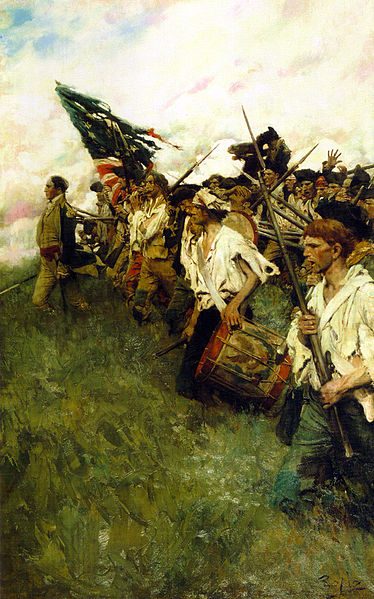
The Battle of Brandywine in early September 1777
On September 11, the two forces, British and American, took up positions on the banks of the Brandywine Creek about twenty-five miles southwest of Philadelphia. During the battle that ensued, Maryland troops, known to be new recruits with generally poor leadership and little training were assigned positions on the perimeter of the central action. Even so, with General Smallwood temporarily absent, and other officers not properly prepared for what they faced, Maryland forces did not operate in a way to be proud of. Three hundred men were killed, six hundred wounded and about three hundred fifty were taken prisoner by the British.
At the time of the Battle of Brandywine, Col. Williams, the commander of the 6th Regiment was a British prisoner of war awaiting an officer prisoner exchange. On the day following the battle, Major Tillard, as acting commander, called Sergeant William Kinnick to his tent. Tillard informed Kinnick that he was being named Sergeant Major for the entire 6th Regiment. This appointment occurred on the 12th day of September, exactly six months following his enlistment date. The prior occupant of the position had been lost in action the day before. Kinnick knew that each regiment was assigned three field officers, six staff officers and four staff noncommissioned officers (NCOs): A sergeant major, a quartermaster sergeant and two lead musicians - a fifer and a drummer.
Sergeant Major William Kinnick was now responsible to carry out directions from the officer corps for the entire regiment including all training, which was his specialty. With his maturity and experience, he was confident that he could carry out all these responsibilities. He was prepared, and immediately assumed his headquarters staff responsibilities with gusto and confidence.
Learn more about the Battle of Brandywine
Action at the Battle of Germantown
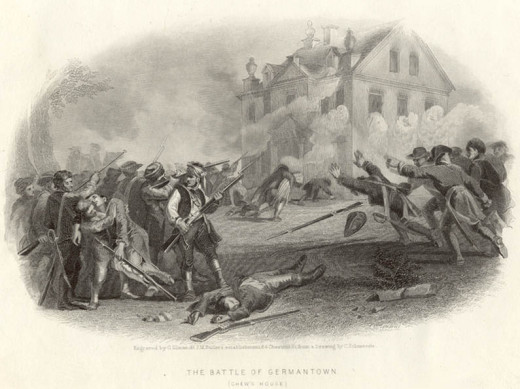
The Battle of Germantown and the Winter of 1777-1778
About three weeks later, the 6th Regiment, along with the six Maryland regiments, again participated on the fringes of the major actions. It was said the fog and smoke from the artillery and fires kindled by the British contributed to the increase in confusion, but Sergeant Major Kinnick also recognized a want of efficient organization. Following Washington's orders, the army retreated in reasonably good condition, allowing Howe to occupy Philadelphia and the Continental Army, including the Maryland troops, moved to the northwest of Philadelphia.
General Washington led most of his army to Valley Forge, Pennsylvania, about twenty-eight miles northwest of Philadelphia, where he planned to go into winter quarters. Enroute, at Gulph's Mill, on December 19, 1777, Washington ordered Smallwood to move his troops, along with the division earlier commanded by General Sullivan, to march immediately to Wilmington, to guard the coast. Washington feared that the British at Philadelphia might move down and seize Wilmington. Smallwood, therefore, was ordered to guard the coast closely, keep his men alert and grant no furloughs unless absolutely necessary. As Valley Forge was only about twenty-five miles north of Wilmington, communication by messengers on horseback could be had daily.
Late in December, the British brig "Smyetry" came aground near Wilmington, and after a few shots from a fieldpiece, surrendered to Smallwood. It contained, besides the wives of several officers, clothing for four British regiments, over one hundred stand of arms and ammunition, pork, butter, wine and other foods and a great deal of baggage of officers. A sloop was also captured with flour, pork, poultry, and other supplies. These were probably the most valuable prizes of the war, to date, it was later said.
Washington rallying the troops
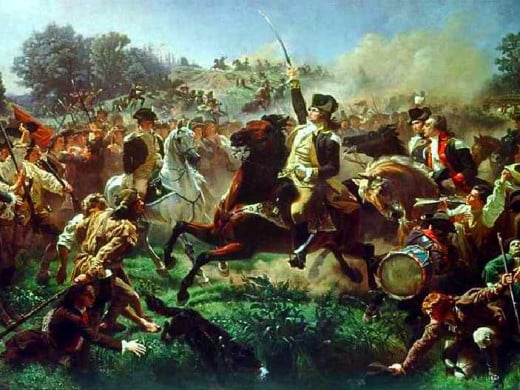
The Battle of Monmouth was the last major Revolutionary War battle in the North
Smallwood, with the troops under his command, in June 1778, left Wilmington and re-joined Washington, who left Valley Forge on June 19th. General Sir Henry Clinton had succeeded General Sir William Howe as chief British commander in America, in Philadelphia. In June, 1778, he evacuated Philadelphia, with the intention of concentrating his forces in New York. Washington overtook him at Monmouth, New Jersey,
The British took up a strong position near Monmouth Court House, New Jersey. Major General Charles Lee was given command of Washington's advance corps about five miles distant. Lee, on the morning the 28th, was ordered to attack the British rear. After marching five miles, Washington, who was bringing up the main body to support the advance, learned that Lee was retreating, rode at once to Lee, whom he accosted with a warmth of language which he rarely used, and ordered him to re-form his division and bring it into immediate action, which Lee promptly did. Lieutenant Colonel Nathaniel Rmsay, 3rd Maryland Regiment, volunteered and held the enemy in check for half an hour. Fighting sword in hand, he fell, pierced with many wound, and was taken prisoner.
In the action on June 28 both armies suffered about equal losses. Maryland lost one other officer and three more were wounded. After the war, Sergeant Major Kinnick chose not to talk about his particular battle in which his troops were heavily engaged. The Battle of Monmouth was the last major Revolutionary War battle in the North. The Maryland forces spent the winter of 1778-1779 at Middlebrook, New Jersey. Shortly thereafter, Great Britain changed its strategy after France entered the Revolutionary War and rather than attacking in the North, they concentrated on conquering the colonies from the South. The Continental Army of General George Washington was using the time to recruit and train more men for combat. Sergeant Major William Kinnick was heavily involved in this training for the Maryland Line throughout 1779. William Kinnick was discharged at the end of his three years of service on the 12th day of February of 1780. On the 19th of April, at home on the Scale of Head plantation, he celebrated his 61st birthday with his extended family.
William Preston participated in the Battle of Monmouth with his New Hampshire compatriots.
- Weston Wagons West - Alexander Weston followed the Revolutionary War career and life of William Pres
View portions of the early Revolutionary War through the eyes of William Preston - a prisoner of war twice - by Indians and by British - who survived to live to raise a big family and live a long life.
Learn more about the Battle of Monmouth
Historical note by the author
All members of the Weston family are fictional, of course. William Kinnick and the members of Maryland and Continental Army mentioned by name were historical figures, used here fictitiously. The relationship between the Kinnick and Weston families therefore were created fictionally for this story.
William Kinnick, was a 5th great-grandfather of the author. Each of the relationships within which these historical figures appear in these episodes are totally consistent with known historical facts for each such person in the official records of Maryland.
The author's historical perspective in this hub relied extensively on his published article in the Maryland Genealogical Society Bulletin, "Analysis of 18th Century Kinnick Surname References in Maryland," Winter 2002, Vol. 43, No. 1, Compiled by William L. (Bill) Smith For the KINNICK Project, pp. 77-90. Also relied on was additional research conducted for the proposed non-fiction book, "The World of Sergeant Major William Kinnick," currently under development.
